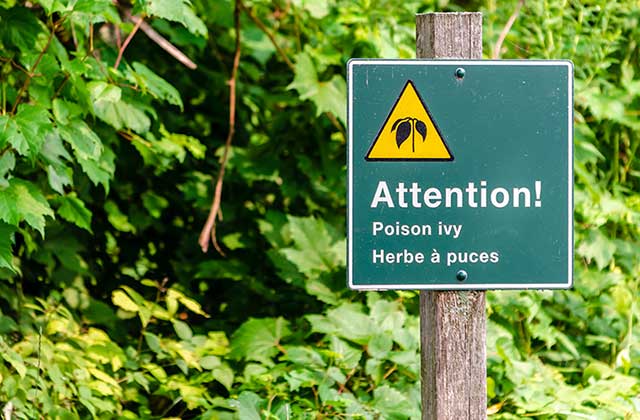How to Deal with Poison Ivy Allergy
The poison ivy plant is a climbing or straggling wood vine that is notorious for causing allergic reactions like itchy rashes and blisters.
Poison ivy can be found everywhere in Canada except in Newfoundland. It usually grows on sandy and rocky shores and sprouts in the clearings, along the roadsides and the borders of woods.
What must you watch for in poison ivy? It’s urushiol. This is the substance present in all parts of the poison ivy, from the roots to the stem and leaves, that causes allergies like rash and blisters to people. A broken part of the plant can cause an allergic reaction upon contact with the skin. Within a day or two days after contact, the symptoms can manifest. Symptoms and the extent of an allergic reaction can be experienced differently depending on the person’s sensitivity and amount of sap that was in contact with the skin. Inflammation can lead to blisters and extreme itchiness.
The person has to come in contact with the sap before an allergic reaction can develop. Being in contact with the plant doesn’t necessarily mean that an allergic reaction can occur. But being in contact with objects or animals (especially the fur) that as picked up the sap from the plant can trigger a reaction.
You can also inhale poison ivy if you burn the plant and take a whiff of the smoke. Inflammation can then occur in the lungs which can lead to having difficulty in breathing and experiencing extreme pain in the lungs. If the poison ivy is eaten, it can lead to damaged airways, kidneys, digestive tract, and other organs. It’s that dangerous if ingested.
Tips to Treat Poison Ivy Rash
If a mild rash occurs because of a poison ivy allergic reaction, you can still treat it with some home remedies and over the counter medications. Here are some tips to treat poison ivy rash and allergies:
- Rinse your skin immediately with lukewarm and soapy water. Rinsing the skin after touching the poison ivy immediately may be able to remove and rinse off the oil. If the oil is not washed, it can spread to the other parts of your body as well as to other people you are in contact with.
- Thoroughly wash your clothes. Wash the clothes you are wearing after being in contact with the poison ivy. If not washed, the oil may spread and touch other areas of your body and cause swelling and irritation to those areas.
- Wash everything that may have the oil on its surfaces. The oil may spread from surface to surface especially to the tools that are used in gardening and other essential tools in working. Make sure to wash your pets as well if they come near to the plant as the oil can stick to their fur and spread to the areas in your house that they come in contact with. Wash these tools and objects with warm soapy water to remove the oil.
- Never scratch the areas in your skin that came in contact with the poison ivy sap and oil. Scratching can irritate and may result in the worsening of your already inflamed skin.
- Do not touch the blisters. If blisters occur, leave them alone. Do not remove the skin above it if it starts to open. That skin protects and prevents infection in your skin.
To relieve itchiness, here are some tips to follow:
- Take short and lukewarm baths. Taking short and lukewarm baths can relieve the itch. You can also use add one cup of baking soda to running water. Having short and cool showers can also help to ease the itch.
- Use hydrocortisone cream or calamine lotion. For mild cases, using calamine lotion and hydrocortisone cream can relieve itch. These are over the counter products that can be bought in any drug store.
- Apply cold compresses to the itchy areas. You can make a cool compress by wetting a washcloth with cold water. Then, wring it to remove the water. Apply the cloth to the infected and itchy skin.
- Take antihistamine pills. Taking antihistamine will reduce the itchiness of your skin. Make sure to ask your doctor for the right medication before taking it.
If the rash and blisters did not heal is still there after 7 to 10 days and may look infected, consult your doctor right away. Online doctors are also available and easy to find on the web. A walk in clinic Calgary can be very helpful if you are looking for a primary care facility that is near your area. If not, you still have online doctors for fast diagnosis and treatment of your poison ivy allergy.
Poison ivy is treatable. Make sure to observe your symptoms and remember if you have been in contact with this poisonous plant. Your doctors can only treat it right if you are certain that the cause for the rash, blisters, and itch is because of the poison ivy plant. Read more on how to get away with allergy.
